A comet approaching Earth could become brighter than the stars this fall
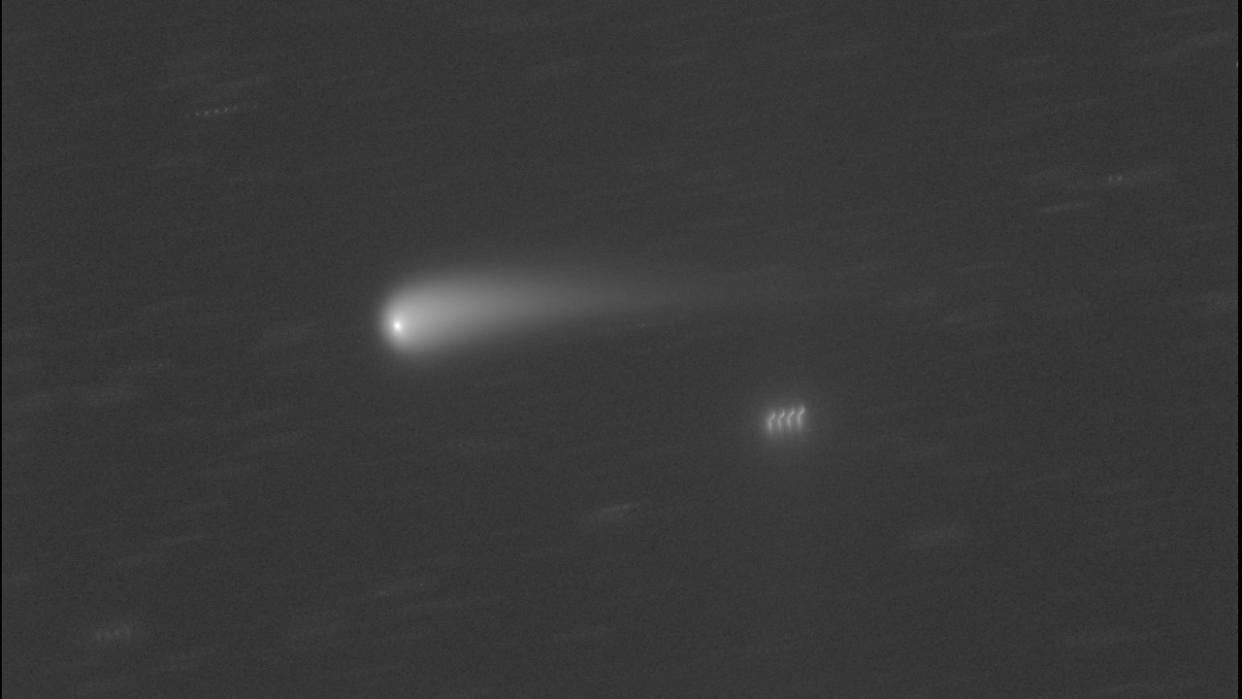
In a year in which we have already been treated to the "Great North American Solar Eclipse" in April and one of the greatest displays of Northern Lights in the past 500 years in May, what other amazing celestial attractions might 2024 have in store for us?
How about a bright naked-eye comet?
Over the last couple of years, two comets have made headlines in the mainstream media. In early February 2023, Comet C/2022 E3 (ZTF), informally called the "Great Green Comet", passed near Earth and then during the past month, Comet 12P/Pons-Brooks drew attention because of its propensity for experiencing sudden flare-up in brightness and appearing to spout gaseous appendages resembling horns, thus giving rise to the moniker "Devil's Comet."
The only problem so far as the person-on-the-street was concerned was that both comets were difficult to see unless you were located under a dark, non-light polluted sky. And even through good binoculars or a small telescope, both were rather unimpressive, appearing as nothing more than faint, fuzzy blobs of light.
Related: A comet coming in 2024 could outshine the stars - if we're lucky
Bright? Easy-to-see?
But by the end of this summer, we may have a good idea as to whether we'll have a bright and easy-to-see naked-eye comet gracing our early autumn evening sky. The comet in question is C/2023 A3 (Tsuchinshan–ATLAS), discovered by the Asteroid Terrestrial-impact Last Alert System (ATLAS) in South Africa on Feb. 22, 2023. ATLAS is a robotic early warning system developed specifically for detecting near-Earth asteroids a few weeks to just days before they might impact Earth.
TOP TELESCOPE PICK:

Want to see comets up close? We recommend the Celestron Astro Fi 102 as the top pick in our best beginner's telescope guide.
Originally thought to be an asteroid, it was later determined that this same object was photographed six weeks earlier by the Purple Mountain Observatory (Tsuchinshan) in the east of Nanjing, China. It has since been determined to actually be an incoming comet.
When the comet was first sighted, it was far out beyond the orbit of Jupiter, some 680 million miles (1.09 billion km) from the sun. But on Sept. 27 of this year, Tsuchinshan–ATLAS will be making its closest approach to the sun, coming to within 36 million miles (58 million km). That also happens to be the average distance of the planet that is closest to the sun, Mercury.
And just over two weeks later, on Oct. 12, the comet will pass just 44 million miles (71 million km) from Earth.
These figures suggest that the comet might brighten to second or possibly even first magnitude and could develop a notable tail that could make for an eye-catching sight in the western evening sky during mid-October 2024.
Read more: How to view and photograph comets
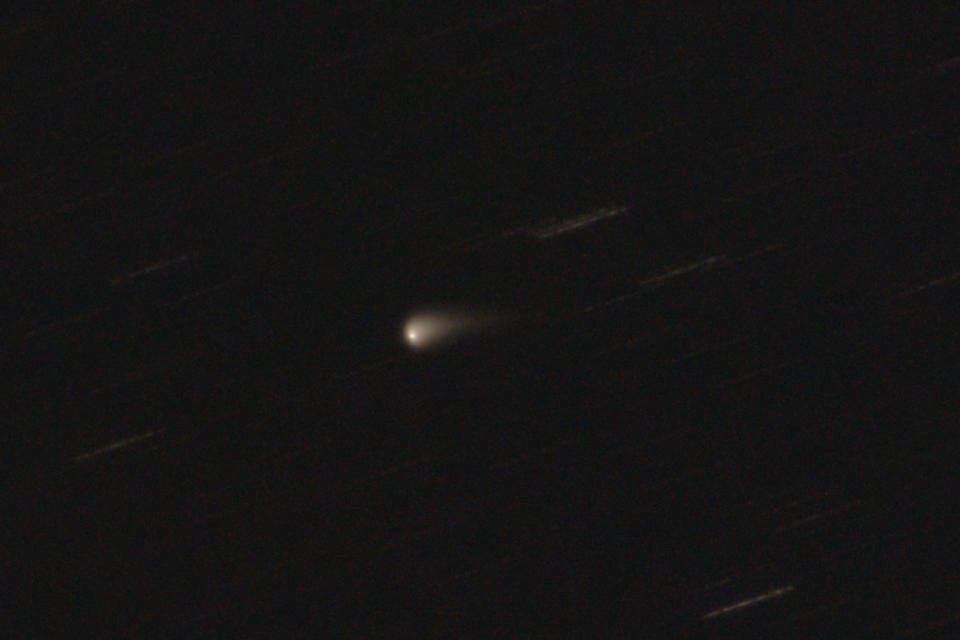
It could also be a dud
Unfortunately, there is a caveat: calculations show that Tsuchinshan–ATLAS has an orbital eccentricity of 1.0001081, meaning that it is a "first-timer," coming directly from the Oort cloud, a spherical shell of icy space debris scientists theorize to be situated far beyond the outer limits of the solar system and thought to contain billions or even trillions of comets.
Comets originating from the Oort cloud have never passed near to the sun before and their nuclei are coated with very volatile materials that vaporize far from the sun, creating short-lived surges in brightness. But as these comets get nearer to the sun, their brightening slows or even stops completely.
Most — though admittedly not all — comets originating from the Oort cloud usually end up being duds. Typically, as these comets cross the orbit of Mars, their steady brightening trend starts to falter, similar to a marathon runner at the 20-mile mark; "hitting the wall" so to speak. In the case of a comet having emerged from the Oort cloud, a sudden decline in brightening may be signaling that it ultimately will end up underperforming.
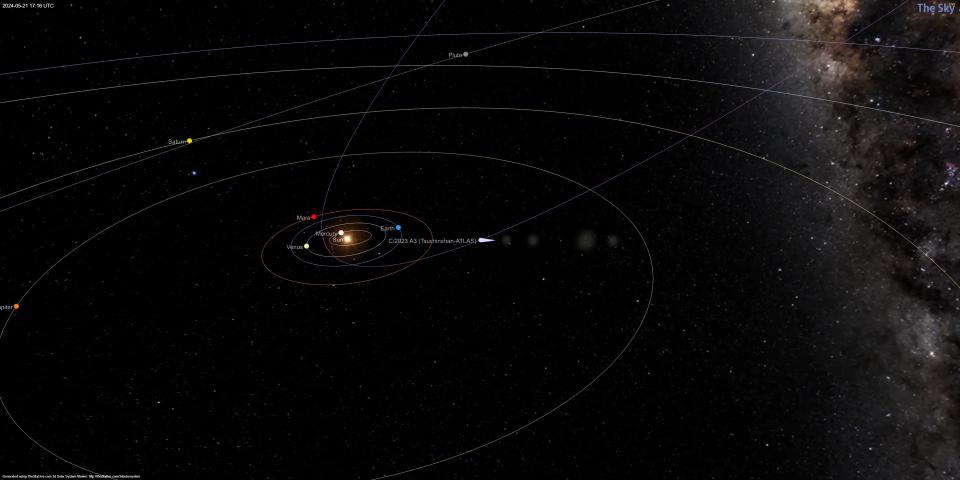
Not until mid-summer
Comet Tsuchinshan–ATLAS will not get to that point in its orbit until late July. If it then continues to steadily brighten beyond that time, then there's a good chance it will evolve into an eye-catching sight. But, more likely, if its brightening trend suddenly slows, or even comes to halt, all bets for a good show are off. Until then, all we can do is wait and watch.
Unfortunately, we here in the Northern Hemisphere will not be able to check on the status of Comet Tsuchinshan–ATLAS during this summer because it will be situated much too far south to be accessible with telescopes. Those living in far-southerly locations, such as Australia, New Zealand and South America, however, will be able to track it in the morning sky before sunrise.
We'll need to rely on reports from these parts of the globe to tell us whether the comet is on track to possibly becoming a bright object.
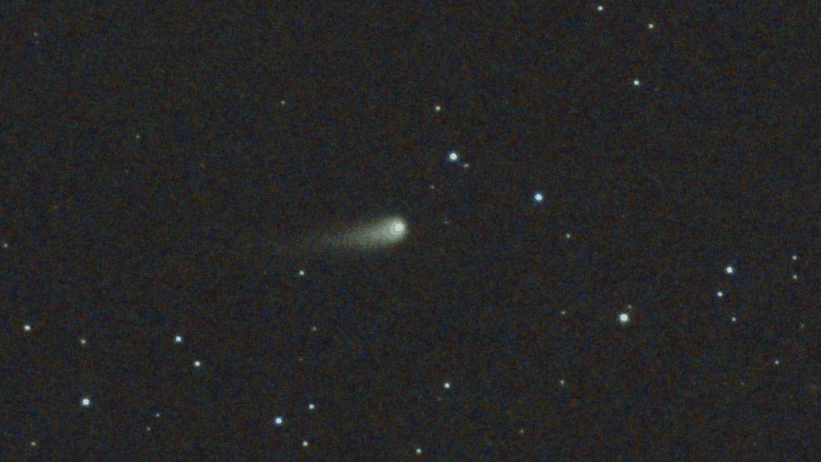
Dusty reflections hold key to a good show
Another thing that could work in our favor is that the geometry of the comet relative to the sun and Earth, places it almost in-between the sun and Earth around Oct. 8, creating a phenomenon known as "forward scattering of sunlight." If the comet is particularly dusty, dust particles ejected from the comet nucleus would preferentially scatter sunlight in a forward direction and could cause a dramatic upsurge in the comet's brightness.
To this end, there are two comets that Tsuchinshan–ATLAS might be compared to, which suddenly brightened-up thanks to forward scattering. The first was Comet Skjellerup–Maristany (C/1927 X1), which briefly became very bright in December 1927. Forward scattering of light on Dec. 18, 1927 allowed the comet to be seen during daylight by virtue of blocking the light of the sun with one's hand; it has since been ranked as among the greatest comets of all time.
The other comet was Comet McNaught, also known as the Great Comet of 2007 and given the designation C/2006 P1, and was the brightest comet in over 40 years; easily visible to the naked eye for observers in the Southern Hemisphere in January and February 2007. At its brightest on Jan. 12, 2007, this comet appeared at least twice as bright as Venus and, like Skjellerup–Maristany, was visible worldwide in broad daylight next to the sun. This extreme brightness was also attributable to forward-scattering.
Some calculations suggest that Tsuchinshan–ATLAS might become as brilliant as Venus around Oct. 8, 2024 — although in the sky — like the comets of 1927 and 2007 — it will also be very near to the position of the sun. In the days that follow, however, Tsuchinshan–ATLAS should sweep rapidly northward and become well-placed for viewing in the western sky by mid-October. Although it will now be fading as it recedes from both the sun and Earth, it hopefully will be bright enough to be well-seen with the naked-eye, perhaps accompanied by a notable tail as well.
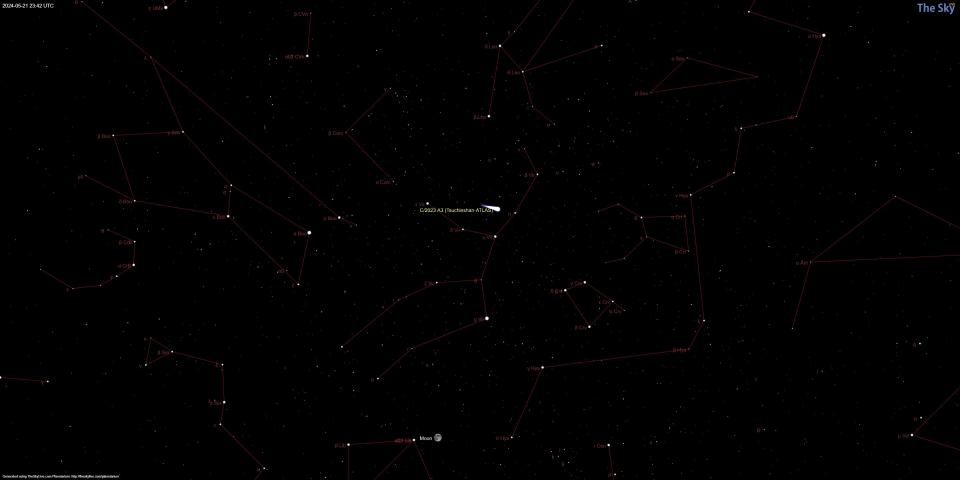
No guarantees
But there are no guarantees. In the past, there have been comets that seemingly promised a great show that failed to live up to expectations. Comet Kohoutek of 1973-74 is a good example. Conversely, there have been comets that did not look like they would perform well, that ended up unexpectedly becoming celestial showpieces. Comet NEOWISE surprised everyone during the summer of 2020 by putting on a good show.
The legendary comet expert Dr. Fred Whipple perhaps said it best when he said:
"If you must bet, bet on a horse, not a comet!"
In the meantime, fingers crossed for Comet Tsuchinshan–ATLAS! Stay tuned to Space.com for future updates.
Joe Rao serves as an instructor and guest lecturer at New York's Hayden Planetarium. He writes about astronomy for Natural History magazine, the Farmers' Almanac and other publications.
